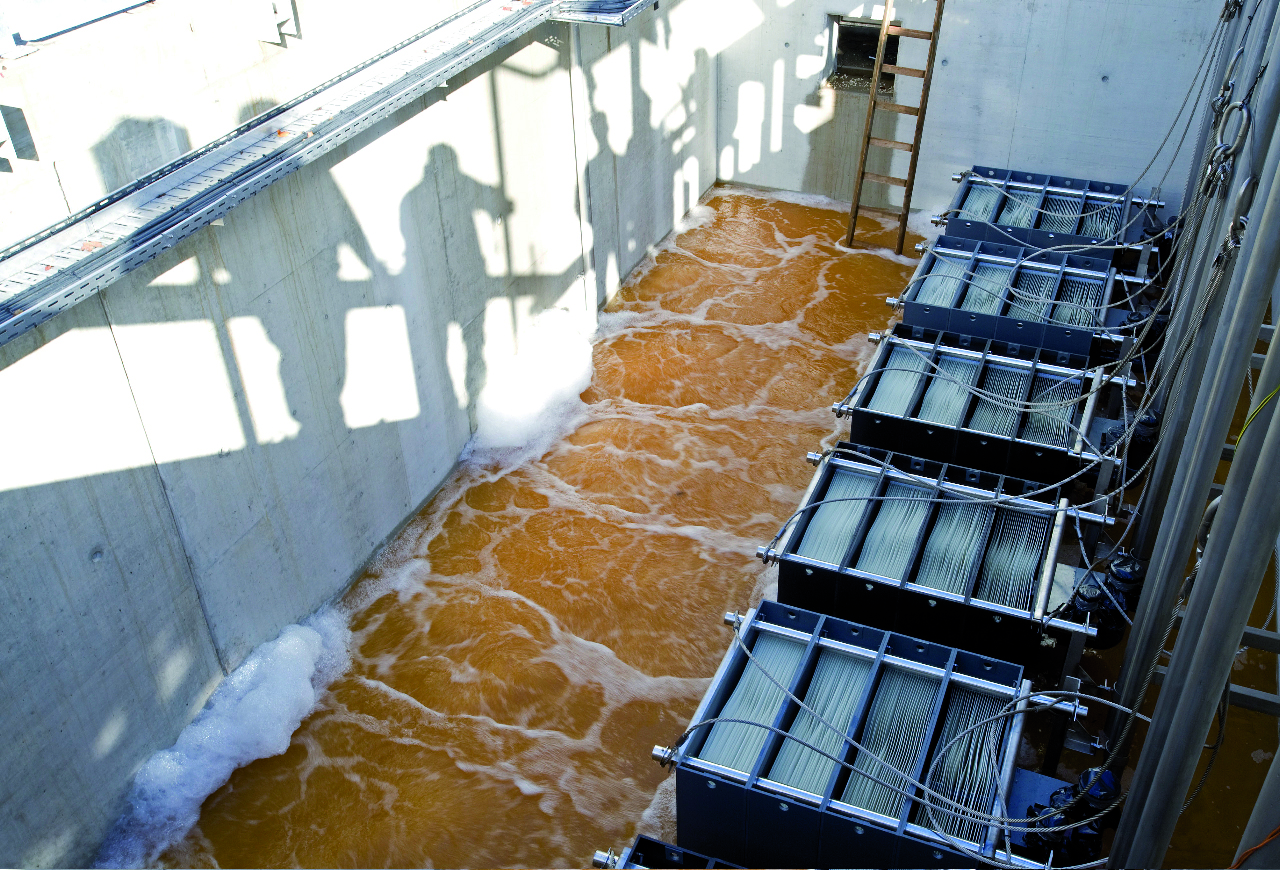
Membrane wastewater filtration process tested to eliminate micro pollutants
February 23, 2017
By
CCE
The membrane filtration step takes over the job of separating (powdered) activated carbon, micro plastics and (multi-resistant) germs.

Wastewater filtration test using membrane technology (source: Microdyn-Nadir)
Contamination of the environment by micro pollutants has clearly been proven, so with the high concentration of microorganisms and the contamination by antibiotics coming from animal breeding, hospitals and walk-in clinics, elimination of micro pollutants in biologically treated wastewater has become more important.
Currently, a combination of powdered activated carbon and subsequent sand filtration is mainly used to eliminate micro pollutants. This process is able to reduce trace substances like drug residues in the effluent of a wastewater treatment plant, however, it is disadvantageous in that the sand filter does not ensure complete separation of activated carbon particles. Thus besides treating wastewater by activated carbon adsorption and sand filtration, further treatment steps must be implemented.
The membrane process presented in the example below combines adsorption of micro pollutants on activated carbon and membrane filtration. The membrane filtration step takes over the job of separating (powdered) activated carbon, micro plastics and (multi-resistant) germs. Hence this process ensures not only compliance to threshold values for drug residues and other trace substances, but also ensures compliance to expected concentration limits for multi-resistant germs and micro plastics in effluents of wastewater treatment plants.
In Huenxe, Germany, a German association for sewage treatment – Emschergenossenschaft/ Lippeverband – operates a municipal wastewater treatment plant with a capacity of 17,000 PE (population equivalents). This plant is divided into an MBR (Membrane Bioreactor) plant and a conventional biological treatment plant, each with a capacity of 8,500 PE.
Tests were carried out with the effluent of the conventional treatment plant in the framework of a master thesis by the University of Dresden, as well as in cooperation with the local association for sewage treatment.
The test plant consists of a filtration tank equipped with an ultrafiltration BIO-CEL membrane module from German-based membrane supplier MICRODYN-NADIR. The filtration tank of the test stand is fed with the effluent of the sedimentation tank. Activated carbon is added from a receiver tank and concentrated in the filtration tank. Activated carbon is separated by the BIO-CEL membrane module and the permeate is transferred to the final effluent. The experiments showed that, as a matter of principle, the combination of activated carbon adsorption and carbon separation by an immersed ultrafiltration module works well and activated carbon is reliably separated.
The increasing concentration of activated carbon had no impact on the membrane performance, and also no change of retention capability could be detected during the entire test period.
This combination of activated carbon adsorption and immersed membrane filtration has proven an alternative to the established activated carbon/precipitation/sand filtration process. The advantages of this configuration are superior with respect to the separation of multi-resistant germs and micro plastics, both of which will be more and more the focus in the future.
Initial cost estimation of this process also demonstrates its competitiveness in relation to the established activated carbon/precipitation/sand filtration process.